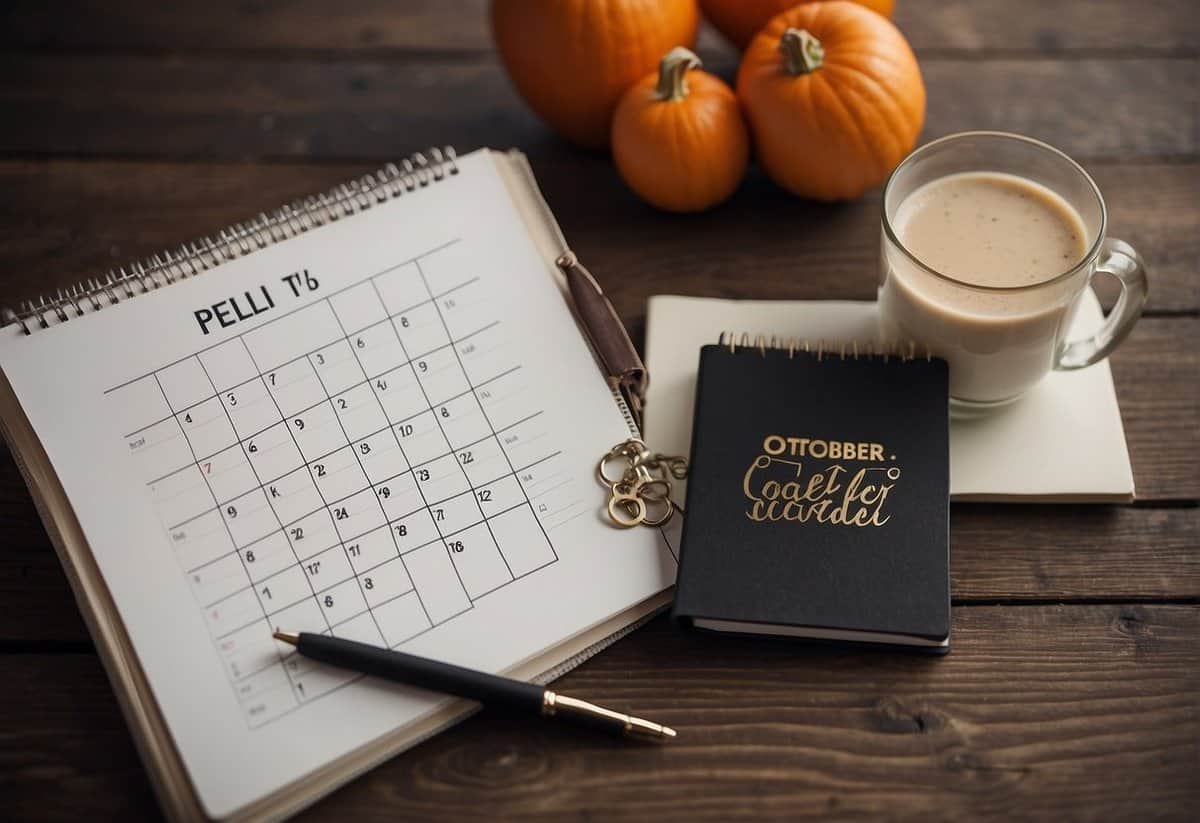Is 10 Months Too Soon to Plan a Wedding? Quick Planning Tips for the Eager Couple
When it comes to planning a wedding, the timeframe can be as unique as the couple themselves. Some may wonder if 10 months is too short a period to plan their dream wedding. The reality is, while traditional timelines suggest longer periods, a beautiful and successful wedding can indeed be organized within a 10-month window. The key is efficient planning and focusing on what truly matters to you and your partner.

Embracing a shorter planning period means prioritizing your tasks and being decisive. Start by cementing your vision for the big day, which will guide all subsequent decisions. You’ll need to be flexible with date and venue choices, and it’s important to align your budget early on to avoid any financial stress. With clear objectives and a structured approach, the seemingly daunting task of planning a wedding in less than a year becomes manageable and even enjoyable.
Key Takeaways
- A 10-month wedding timeline is feasible with efficient planning and clear priorities.
- Establishing a vision and budget early is crucial for a smooth planning experience.
- Flexibility and organization are key to enjoying the planning process and your special day.
Setting Your Wedding Vision

Embarking on your wedding planning journey, it’s essential to establish a clear wedding vision early on, regardless of the timescale. Your relationship is unique, and your special day should reflect this. To set your vision, start with gathering wedding inspiration. Here’s how to lay the groundwork for your dream wedding:
Define Your Style:
- Consider what resonates with both of you. Are you drawn to classic elegance, rustic charm, or modern innovation?
- Flip through bridal magazines or explore websites like The Knot to identify styles that speak to you.
Choose Your Theme:
- Determine a wedding theme that aligns with your personalities. Themes can range from a cozy winter wonderland to a vibrant summer fiesta.
- Think about the colors, patterns, and motifs that you are both fond of.
Consider Your Love Story:
- Reflect on memorable moments in your engagement and relationship. Integrating these personal touches will make your wedding day truly yours.
Collate a Vision Board:
- Create a physical or digital vision board. Websites like Junebug Weddings offer resources to organize your ideas visually.
Consult with Pros:
- Enlist the guidance of seasoned wedding planners who can turn your brisk timeline into a perfectly executed event, as referenced by The Bridal Tip.
Remember, your wedding vision sets the tone for the entire planning process. Keep communication open between you as a couple and have fun with it. Your day will be a celebration of your love, and with careful planning, even a shorter engagement can lead to a beautiful wedding tailored just for you.
The Wedding Planning Timeline
When planning your wedding within a 10-month timeframe, it’s critical to establish a strategic timeline that covers the essential steps from setting the date to the final dress rehearsal. This timeline ensures that no detail is overlooked and that your celebration unfolds seamlessly.

Choosing the Date
Select a date that aligns with your preference for season and venue availability. Remember, popular wedding dates and seasons may require you to book earlier, and destination weddings may necessitate additional planning time.
Key Milestones to Consider
9 Months Out: Begin your search for essential vendors like the photographer, videographer, DJ, and florist.
6 Months Out: Order save-the-dates and wedding invitations.
3 Months Out: Finalize menu cards and other stationery. Schedule hair and makeup trials.
Tackling the Details
With your date set and vendors in place, refine the details:
- Choose a caterer and taste potential dishes for your menu.
- Design your wedding cake with your selected baker.
- Confirm arrangements for transportation and accommodations for guests, if needed.
Finalizing Your Guest List
Create your guest list early in your planning process. Ensure you have current addresses for save-the-date cards, and later on, the wedding invitations.
Dress Rehearsals and Trials
Schedule a final fitting for your wedding dress and arrange the wedding party attire. Conduct trials for hair and makeup to finalize your look.
Budgeting and Finance

When planning your wedding, a smart approach to budgeting can make all the difference. Ensuring you understand your financial limits, allocate funds wisely, and account for unexpected costs will help keep your special day within reach.
Creating a Wedding Budget
Your first step is to establish a wedding budget that works for you. Consider who will contribute financially to your wedding and how much you can afford to spend without risking debt. Begin with categorizing your estimated expenses and then break them down by percentage or fixed amounts. Utilizing a wedding budget tool could simplify this process.
- Wedding Budget Categories:
- Venue: 40-50%
- Catering: 30-35%
- Photography and Videography: 10-15%
- Decor and Flowers: 8-10%
- Entertainment: 5-7%
- Attire and Beauty: 2-5%
- Misc (Invitations, Favors, etc.): 2-5%
Allocating Funds to Key Areas
Divide your wedding budget proportionally between all services. Spend more on priorities like the venue and caterer, and save on areas with more flexibility. Don’t forget to reserve a portion for your desired vendors early to ensure their availability for your date.
- Fund Allocations:
- Must-Haves: Venue, Catering, Photographer
- Nice-to-Haves: Entertainment, Makeup Artist, DJ
- Optional: Extra Decor, Upgraded Accessories
Hidden Costs and Contingencies
Always anticipate hidden costs, including service tips, delivery fees, and overtime charges. It’s wise to set aside an emergency fund—about 5-10% of your total budget—as a cushion for these unplanned expenses.
- Examples of Hidden Costs:
- Vendor Meals
- Cake Cutting Fees
- Setup and Breakdown Costs
Managing Payments and Contracts
When booking vendors, keep track of deadlines for deposits and final payments. Review contracts carefully for each vendor, whether it’s the catering company or your DJ, and verify details like date, time, and services provided. Use a checklist or financial planner to manage your expenses and stay organized.
- Payment Checklist:
- Read Contracts Thoroughly
- Note Payment Deadlines
- Confirm Details a Week Before the Wedding
Final Steps Before the Big Day

In these final months leading up to your wedding day, attention to detail is paramount. It’s time to handle the closing formalities and make sure all preparations align for a seamless experience.
Legal and Official Documentation
Ensure that all legal and official documentation is in order for your wedding day. This includes applying for and obtaining your marriage license, which typically has a set period within which it is valid. Confirm the requirements in your locality, as some areas might have a waiting period. If required, have discussions with your officiant to finalize the proceedings.
Marriage License
- Check validity period
- Arrange meeting with the officiant
Travel Reservations
- Confirm bookings for guest accommodations
- Finalize honeymoon travel and stay
Communication and Coordination
At this stage, communication and coordination with all involved parties are essential. If you have a wedding planner, meet to review the day-of timeline. Update your wedding website with any last-minute details and ensure that all wedding stakeholders are informed of their roles.
Delegate Tasks
- Assign day-of duties to trusted friends or family
- Confirm arrangements with vendors (e.g., photographer, wedding band)
Wedding Invitations and Registry
- Double-check RSVPs and connect with non-respondents
- Share registry details for late gift registry additions
Last-Minute Preparations
Last-minute preparations can feel overwhelming, but they’re critical for the day to run smoothly. Try on your wedding attire to avoid any day-of surprises and ensure rings and vows are ready.
Wedding Rings & Vows
- Pick up and secure wedding rings
- Rehearsal of vows
Hotel & Travel Reservations
- Re-confirm hotel bookings for guests
- Check in with travel reservations
The Rehearsal and Engagement Celebrations
The rehearsal dinner provides a fantastic opportunity to run through the ceremony’s choreography. Use this time to distribute wedding rings to the responsible parties and share last-minute guidance with the wedding band or DJ. Engagement celebrations can also happen around this time, providing a joyous segue into the wedding day.
Rehearsal Dinner
- Practice processional and recessional
- Communicate any special announcements or logistical details
Engagement Party
- Capture engagement photos
- Celebrate with close friends and family before the big day
Frequently Asked Questions

Planning your big day in a shorter timeframe can be a whirlwind with its unique set of challenges and milestones. Here’s your go-to guide for the pressing questions regarding a 10-month wedding timeline.
What are the essential steps to plan a wedding within 10 months?
In 10 months, key steps include securing your venue, setting a budget, booking vendors, sending invitations, and selecting attire. Each of these should be approached with urgency while not sacrificing attention to detail.
How soon should I send out ‘save the dates’ for a wedding less than a year away?
For a wedding planned within a year, you should aim to send out save-the-dates six to eight months in advance, especially if guests need to make travel arrangements.
What is the ideal timeline for a 9 to 10-month wedding planning process?
Starting with the big tasks like venue booking and ending with the finer details such as seating arrangements, the ideal timeline should begin with broader plans and become more specific as the months progress.
Can a wedding dress be selected and tailored in a 10-month time frame?
Yes, a wedding dress can certainly be chosen and tailored within 10 months. It’s recommended to start dress shopping early to allow ample time for fittings and alterations.
Is an 8 to 10-month engagement period ample for planning a detailed wedding?
An 8 to 10-month engagement can be enough to plan a detailed wedding, provided you stay organized and make decisions in a timely manner. It may require a more proactive approach and clear communication with your vendors.
What items should top my checklist for planning a wedding in 9 or 10 months?
Top items on your checklist should include booking your venue, finalizing your guest list, arranging a caterer, and photographer, along with settling on your wedding outfits. These are crucial and time-sensitive decisions that will shape your big day.

